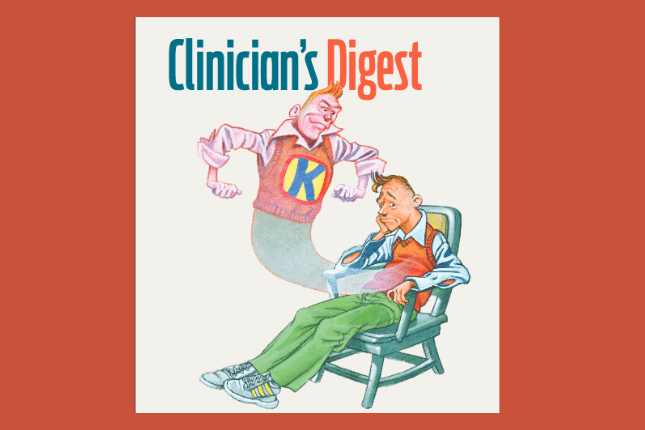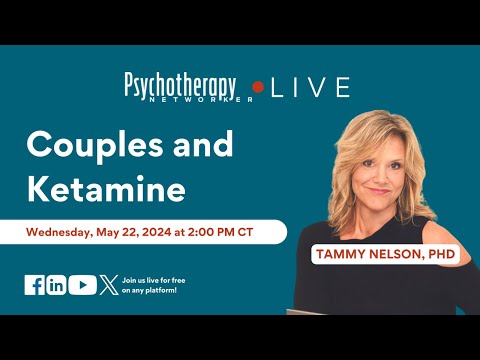Since it was introduced as an anesthetic in the 1970s, ketamine has occupied an uncertain pharmacological status. It’s been used as both a Vietnam-era battlefield painkiller and an illicit party drug, better known as Special K. But recent findings in studies around the world have some researchers wondering whether it might be the silver bullet for depression that Prozac and its sidekicks never turned out to be.
By now, the limitations of the SSRIs are widely known. Only 27 percent of depressed patients using SSRIs achieve remission of symptoms within 12 weeks, according to NIMH’s landmark STAR*D study. Even when SSRIs work, they take an average of 7 to 10 weeks to take effect. And in many cases, they have side effects too undesirable for clients to stick with them.
Some researchers now believe that ketamine could be the forerunner of a new generation of antidepressants with startling effectiveness. Administered intravenously over the course of 40 minutes, it can alleviate symptoms of depression within two hours. This has already led to ketamine’s use in cases of high suicide risk, where the stakes are high and time is often short. Even after its initial effects wear off, many clients report feeling less depressed, even days after the initial injection.
“I think ketamine’s one of the most promising drugs to come along in decades,” says John Preston, professor emeritus at Alliant International University in Sacramento and author of You Can Beat Depression: A Guide to Prevention and Recovery. “The holy grail in treating depression is finding something that works fast. If they have to wait several weeks, a lot of patients will give up, and the dropout rates for treatment are really high.”
Nevertheless, ketamine is often written off as a shady club drug. Critics say its hallucinogenic effects are a real danger, emphasizing that its side effects can include euphoric floating sensations, dizziness, confusion, an abnormal heart rate, and in extreme cases, schizophrenia-like dissociation, colloquially called “entering the K-Hole.” However, proponents argue that when ketamine is used properly under clinical supervision, these symptoms are mild and usually dissipate within an hour after injection.
A more formidable obstacle to the use of ketamine as an antidepressant is the absence of Food and Drug Administration (FDA) approval, which makes it impossible to receive insurance reimbursement for its use. As a result, individual injections can cost anywhere from $300 to $1,000. Meanwhile, some countries consider ketamine a potentially dangerous narcotic. China recently initiated a proposal in the United Nations to have it placed in Schedule 1 of the 1971 Convention on Psychotropic Substances. Canada has classified it as a Schedule 1 narcotic since 2005. In December 2013, India added ketamine to its Schedule X of the Drug and Cosmetics Act, following instances in which it had been used as a date-rape drug.
However, recent news indicates that the tide may be changing. Last November, the FDA granted ketamine “breakthrough therapy” status to permit its study in clinical research settings, where it’s administered as an antidepressant to a select few. According to the Ketamine Advocacy Network, a makeshift organization of US doctors and clinicians who offer ketamine treatments, 18 ketamine clinics are operating unofficially in the United States, though they acknowledge that its sometimes hallucinogenic side effects are a disincentive for wider use in clinical practice. Another barrier to wider use is its typical administration, through infusion, which many psychiatric offices are unequipped to handle.
Currently, there’s a lack of consensus on ketamine’s proper dosage. Most administrations involve intravenous infusions of 0.5 mg over an average of 40 minutes, but the effects of this dosage vary widely, based on factors like age, body weight, heart health, and other medications the client may be taking. “Ketamine has never really been used in the doctor’s office as an antidepressant,” says Frank Anderson, a psychiatrist and supervisor at the Trauma Center of the Justice Resource Institute, who works with patients who’ve used ketamine recreationally, sometimes consuming toxic amounts of it.
“If it’s ever going to be more widely accepted, ketamine will need to be highly regulated,” he says. “The damage is that it’ll be administered inappropriately, as with a lot of prescribers who overuse benzodiazepines and get patients hooked on them.” Anderson notes that what made the latest class of SSRIs so popular was the fact that they could be prescribed in bulk, without much fear of death by overdose or other dangerous side effects. “Unless we figure out a safe way to prescribe it, ketamine’s impact on depression treatment will be limited.”
Most pharmaceutical companies see little incentive to research or market the drug, as it’s already available in a generic form. “Ketamine is an old drug whose patent expired decades ago, and is very cheap to manufacture generically,” reads the Ketamine Advocacy Network website, “which means it will never produce blockbuster profits.”
However, this isn’t preventing some pharmaceutical companies from repurposing and rebranding ketamine, most notably the Illinois-based company Naurex. In December of last year, Naurex created a ketamine nasal spray, dubbing the new concoction GLYX-13. In a trial involving nearly 400 patients, about half reported reduced signs of depression, without hallucinatory side effects. The company is currently in the third phase of a trial to confirm the safety of GLYX-13, with the hope that it will meet FDA standards. Johnson & Johnson is also in the process of creating a nasal spray containing esketamine, a ketamine derivative.
“You’d better believe that drug companies are salivating,” says Preston. “They’re figuring out ways to make using ketamine more profitable, and when they get enough information, what they’re probably going to do is develop drugs that are similar to ketamine so they can patent them.”
There’s also evidence for the effectiveness of nasally administered ketamine outside of pharmaceutical company studies. In a randomized, double-blind crossover study conducted in 2013 by the Icahn School of Medicine at Mount Sinai in New York, nearly 20 test subjects were given 50 mg of ketamine hydrochloride nasally. Nearly half reported a significant decrease in depressed thoughts within 24 hours.
SSRIs like Paxil and Prozac target serotonin receptors, but ketamine targets the glutamate system, the major excitatory neurotransmitter in the brain. Proponents believe the release of glutamate enabled by ketamine results in the formation of new brain synapses and greater density of the dendritic spines on neurons that promote connectivity between them. A 2010 study at Yale University found that administering ketamine to rats led to increased growth and function in spine synapses in the prefrontal cortex, counteracting growth deficits that typically follow depressed episodes.
Only additional research and clinical trials on a broader scale will determine whether ketamine will be a game changer in depression treatment. Teams at the National Institute of Mental Health are already assessing the effects of dosing adjustments, raising dosage levels to 2 mg in later stages of treatment. Study coordinators are also looking at combining ketamine treatments with electroconvulsive therapy and other medications.
At this point, no one is saying that ketamine alone holds the key to curing depression. Time will tell whether ketamine heralds the development of a new generation of fast-acting remedies, but most therapists believe that, given the complex biopsycho-social nature of depression, a single biological intervention is unlikely to yield a revolutionary cure.
“There are always limitations to medications,” says Preston. “But right now, ketamine is the talk of the town.”
Illustration © Ralph Butler
Chris Lyford
Chris Lyford is the Senior Editor at Psychotherapy Networker. Previously, he was assistant director and editor of the The Atlantic Post, where he wrote and edited news pieces on the Middle East and Africa. He also formerly worked at The Washington Post, where he wrote local feature pieces for the Metro, Sports, and Style sections. Contact: clyford@psychnetworker.org.












